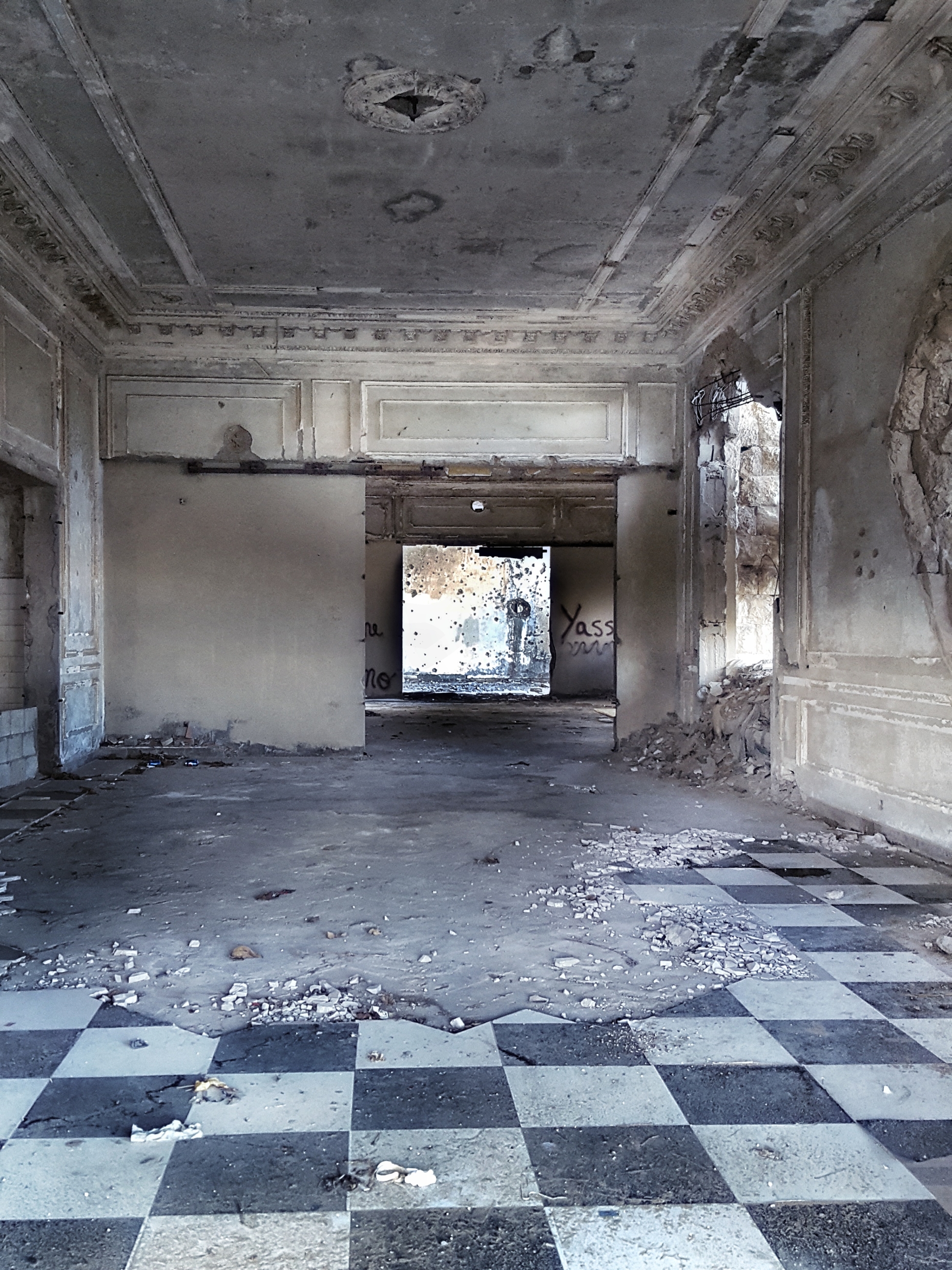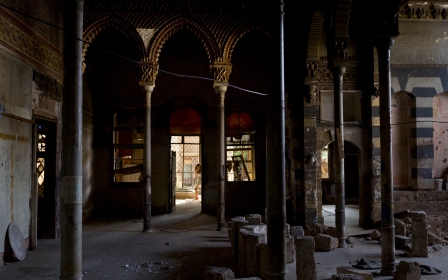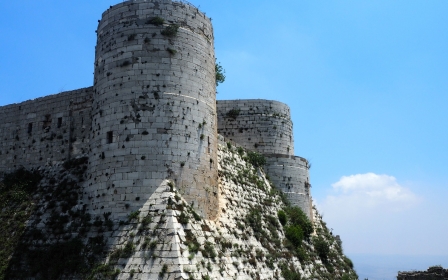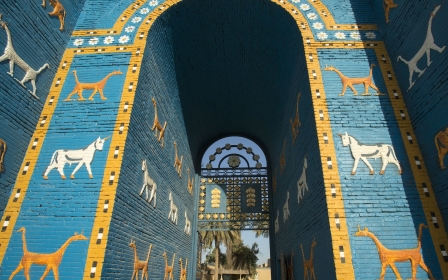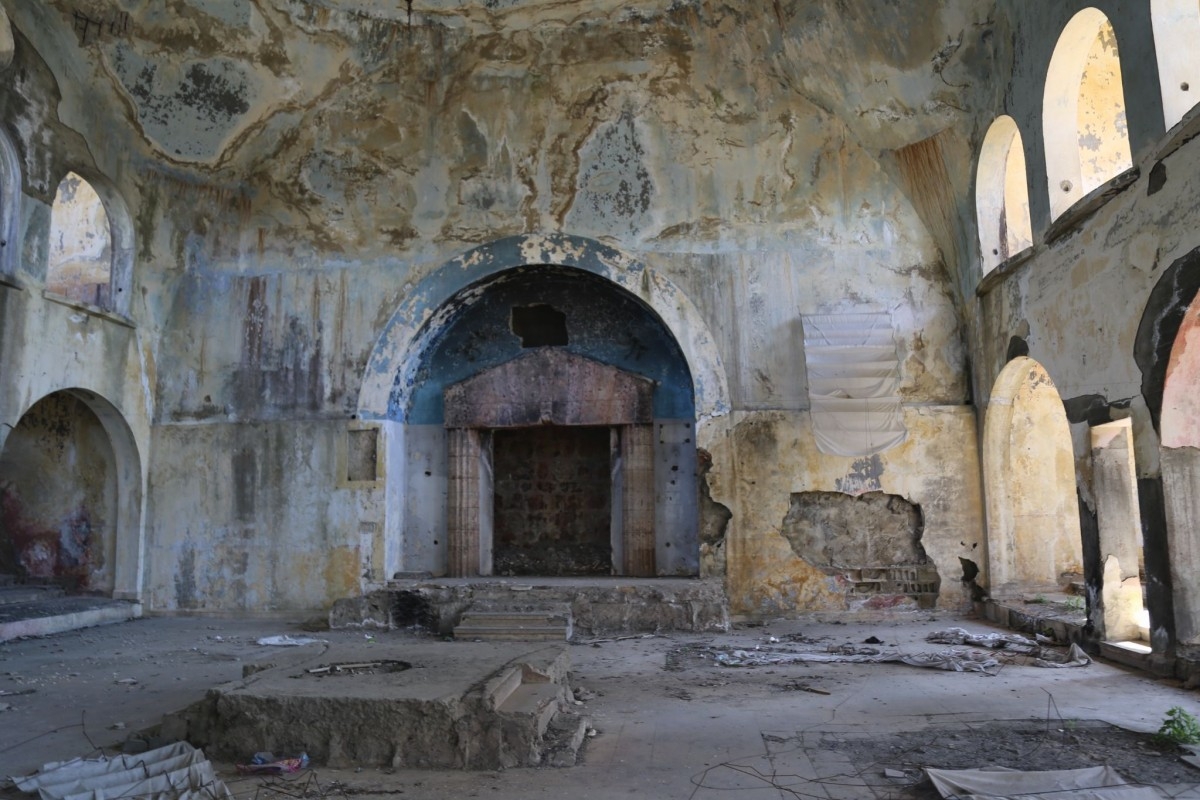
In pictures: The ravaged grandeur of Lebanon's forgotten buildings

Beirut is speckled with iconic buildings, many of which sit derelict today. One of the capital's most arresting structures is the Pink House. Located at the seafront, the Ottoman villa was built by a prominent local resident, Mohammed Ardati, in the late 1800s. In the early 20th century, numerous dignitaries stayed here, including an American consul and a young Charles de Gaulle. (MEE/Clotilde Bigot)
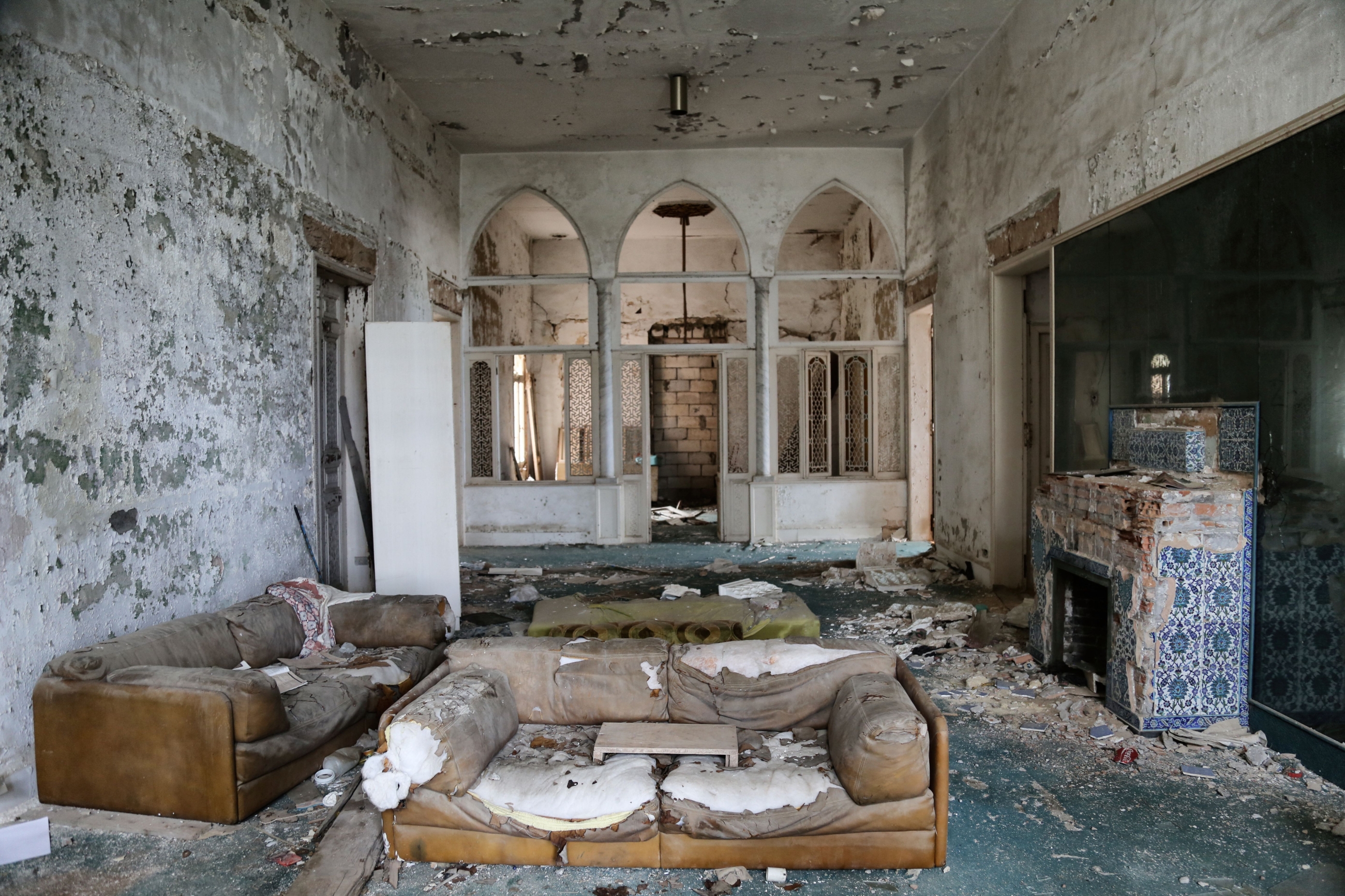
In the 1970s and 80s the ground floor was used as Lebanese artist and interior designer Sami El Khazen's studio. But in 2014, the residence was officially abandoned when the building’s last tenant, his sister Fayza El Khazen, moved out. The empty villa overlooking the sea is now visibly in disrepair. Its current owner, property developer Hisham Jaroudi, said he planned to restore it and turn it into an exhibition space. (MEE/Clotilde Bigot)

The Grand Sofar Hotel was one of the most glamorous hotels in Lebanon at the turn of the 20th century. Built in 1892 by Lebanon’s wealthy Sursock family, many artists came to stay here in the 1920s. Weddings and conferences, and the first meeting of the Arab League, which was formed in Cairo in 1945, were held on the premises. (MEE/Clotilde Bigot)

The hotel sustained considerable damage during the civil war but was later restored. In 2018 the owner, Roderick Sursock Cochrane, reopened it as a temporary arts venue with the help of the British artist, Tom Young, whose work celebrates the hotel’s glorious past. (MEE/Clotilde Bigot)
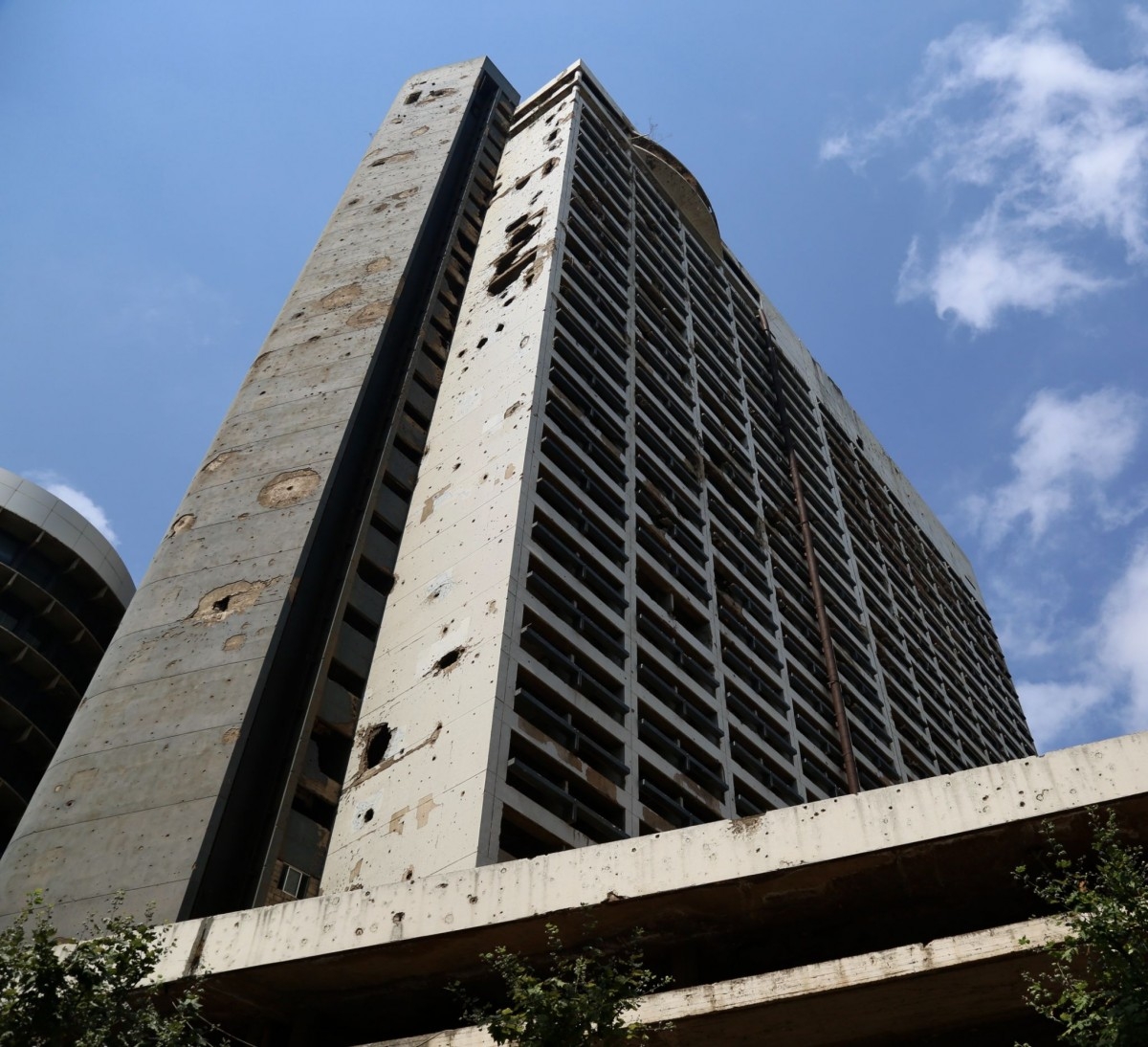
The Holiday Inn on the capital’s waterfront district opened in 1974, the year before the outbreak of civil war. In the early years of the war rival sectarian groups vied for control of three of the capital's luxury hotels in what was dubbed "The Battle of the Hotels", leaving the 26-storey luxury hotel severely damaged. (MEE/Clotilde Bigot)

"Beirut, today, has a certain derelict grandeur,” founder of the Lebanese Urbex Community Fadi Badran told Middle East Eye. “To me, the building is emblematic. It is a symbol of Beirut’s grandeur but also of its devastation, for which we are all responsible." (Fadi Badran)

Access to the former lobby is now under the control by the Lebanese army. “You need three authorisations to gain access to the building, one from the lawyers responsible for the structure, one from the department of defence, and one from the army brigade HQ located on the premises,” Badran added. (Fadi Badran)
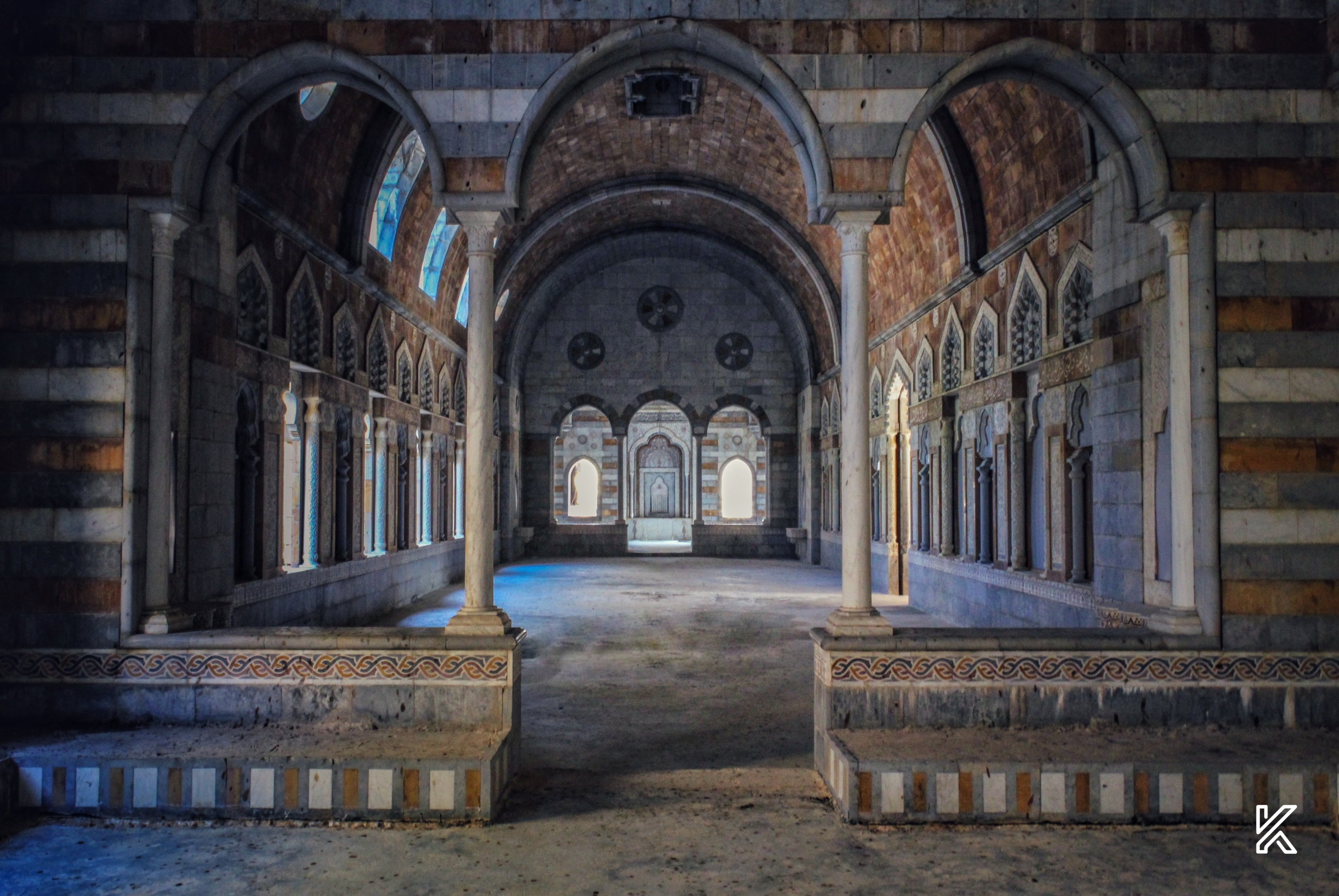
An old palace in the district of Jezzine, southeast of the capital, is another intriguing site. “The palace was enormous, but it was never finished," said veteran urbexer, Karim Abou Joud. "There were lots of astronomy engravings and references to medicine. From the architecture and floorplan, I’m guessing it was a medical university or a hospital.” (Karim Abou Joud)
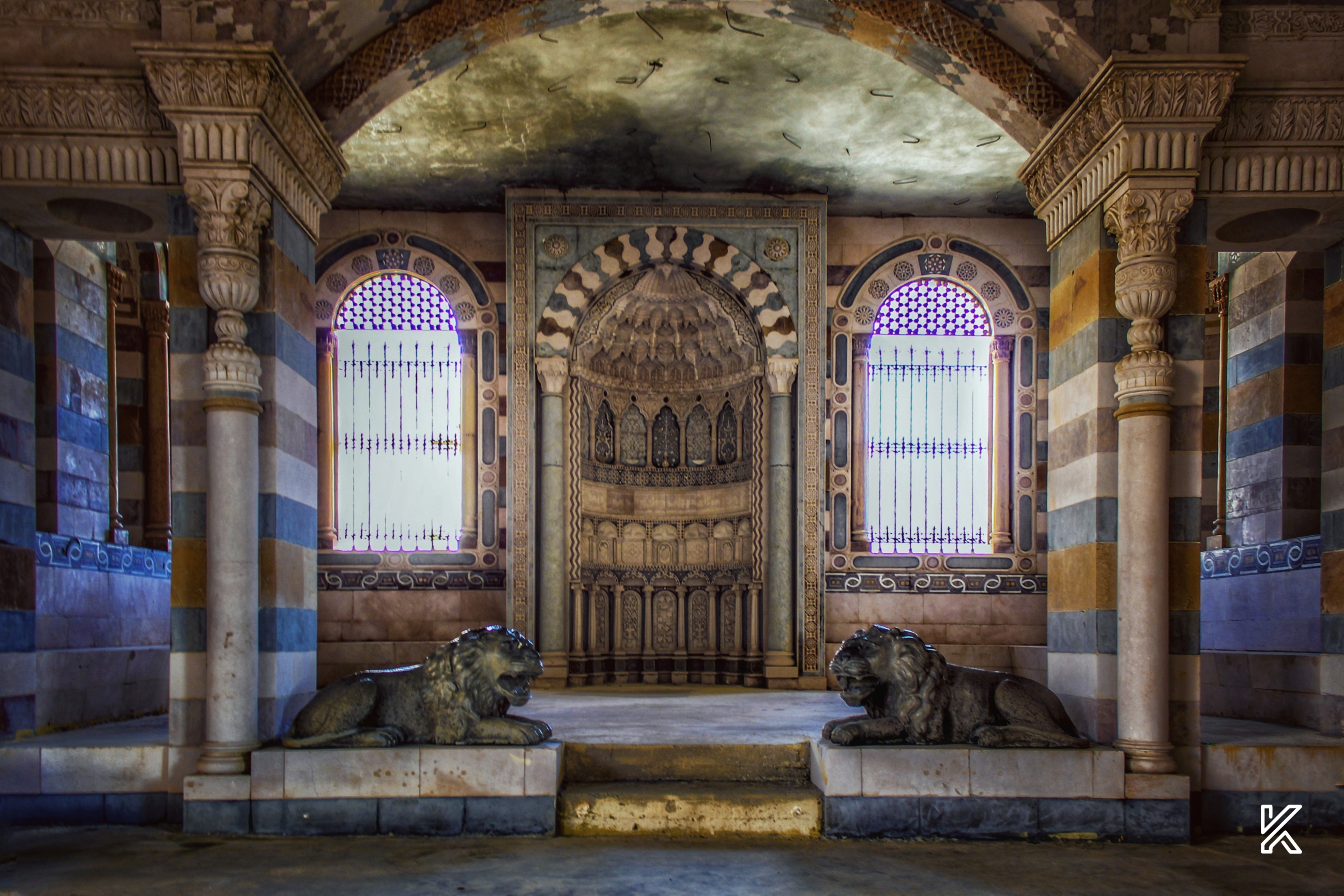
“Construction began in 1964. It was supervised by Dr Farid Serhaz [former member of parliament]. But for some reason, it came to a stop, though certain rooms are still intact,” Abou Joud added. “Hardly a month goes by without my discovering a new site.” (Karim Abou Joud)

Villa Ibrahim Shaker, named after the Saudi magnate who ordered its construction in the 1950s, is perched on a hilltop in the district of Aley. Its unrivalled views of Beirut made it a highly strategic position during the civil war, especially in confrontations between the Progressive Socialist Party (PSP) and Christian militias. (Clotilde Bigot)

On the roadside near the popular Bois-de-Boulogne region - known locally as Bologna - in Mount Lebanon, the gate to this abandoned villa is held shut by an old chain. Getting past the gate and entering the house, which no longer has a door, is easy. (MEE/Clotilde Bigot)

Inside, the only things left are the walls, floor and the ceiling. Even the bannisters have been stolen. The house was most likely abandoned during the civil war, when heavy fighting broke out in the area. (MEE/Clotilde Bigot)

The town of Bhamdoun in the tourist city of Aley was the choice summer resort of a fashionable Lebanese Jewish community, who built a synagogue there in 1922. It is one of the four Lebanese synagogues still intact today, though it has been vacant since the civil war. (MEE/Clotilde Bigot)
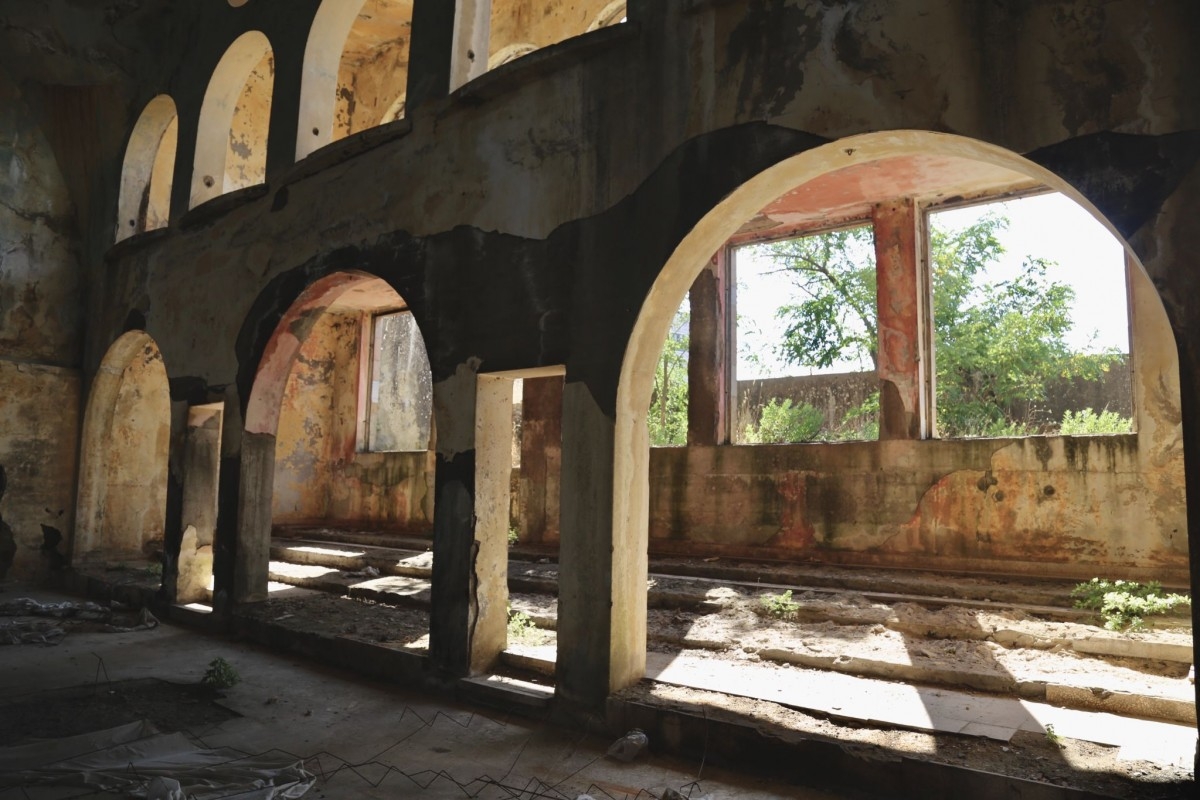
Today, the Jewish community in Lebanon has all but disappeared, and its heritage sites are in danger of falling into obscurity. Stray dogs have taken up residence at the Bhamdoun synagogue, which makes it difficult and dangerous to enter the site. Large signs reading “no photos” are posted all over the premises to stop curious urbexers from wading too far in. (MEE/Clotilde Bigot)
This article is available in French on Middle East Eye French edition.
Middle East Eye delivers independent and unrivalled coverage and analysis of the Middle East, North Africa and beyond. To learn more about republishing this content and the associated fees, please fill out this form. More about MEE can be found here.


